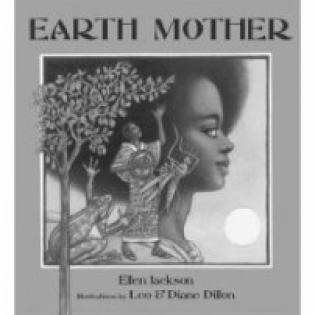Earth Mother Literature Guide
Have you ever wondered why we need mosquitoes in the world? While this book might not make you like mosquitoes, it will help you appreciate and feel at peace with the mosquito. The graceful illustrations and gentle text bring to life a message of the balance and beauty of nature.
Before Reading
ASK: If there were an Earth Mother, what do you think her job would be?
SHOW: Look at the cover. The illustrator chose to put a frog, a human, and a mosquito on the cover along with Earth Mother. How do you think these characters feel about the Earth Mother, and how does she feel about them?
CONNECT: What are your favorite parts of nature? What do you like to do outside? What are your least favorite parts of nature?
During Reading
ASK: How does Earth Mother feel about the earth and all its inhabitants? How can you tell?
SHOW: Look at the four pictures where Earth Mother is talking to Man. Discuss how her face changes as he is saying different things to her. What do you think she’s thinking in each picture?
CONNECT: How do you feel when someone talks to you about something you made? Try to explain the different feelings you have when you hear praise and criticism. How do you feel when someone looks at something you made but doesn’t say anything? How can we show respect for the work of Earth Mother? What or who does Earth Mother remind you of?
After Reading
ASK: What do you think is Earth Mother’s most important work? Why do you think the author never let us hear Earth Mother say anything with words? Did she communicate anything?
SHOW: Notice that Earth Mother’s poncho changes pattern as she moves through the day. Talk about the different designs and what they mean to you.
CONNECT: Discuss the meaning of “point of view.” We can’t always see or understand another person’s point of view. What do we learn from the words of Man, Mosquito, and Frog?
Activities
-
Go on a spider web hunt. Bring a sketchbook and draw pictures of any webs you find. (You can make a small sketchbook by stapling half sheets of white paper together between two covers. Covers can be cut to size from cardboard, construction paper, wrapping paper, or cereal boxes.)
-
The endpapers at the beginning and end of the book have simple symmetrical drawings of the frog, person, and mosquito. Try to draw using the same style—either copy one of those or draw a bird, flower, or mouse.
-
This book uses creative words and images to describe natural objects and actions. For example, “Earth Mother gave the beetles shiny jackets.” Write other creative descriptions of Earth Mother’s work. For example, how does she care for dragonflies, giraffes, or goldfish?
-
Write (or say aloud) a sentence telling Earth Mother how she is kind to you.
-
Complete the following sentence about something you think isn’t right in the world (use the same word in both blanks): _____________ is bad, bad, bad. If there were no more _____________, this world would be perfect.
-
Name some things that people have done to the earth that have upset the balance of nature. Make a list of issues that need to be addressed. Star the ones that are most important to you. Circle the ones you can do something about.
-
Promise to pick up one piece of trash outside every day this week. Then make sure you do it.
-
Make a poster that you can hang up in your room or a public place. The poster will communicate that people should take care of the earth because it is a special place.
